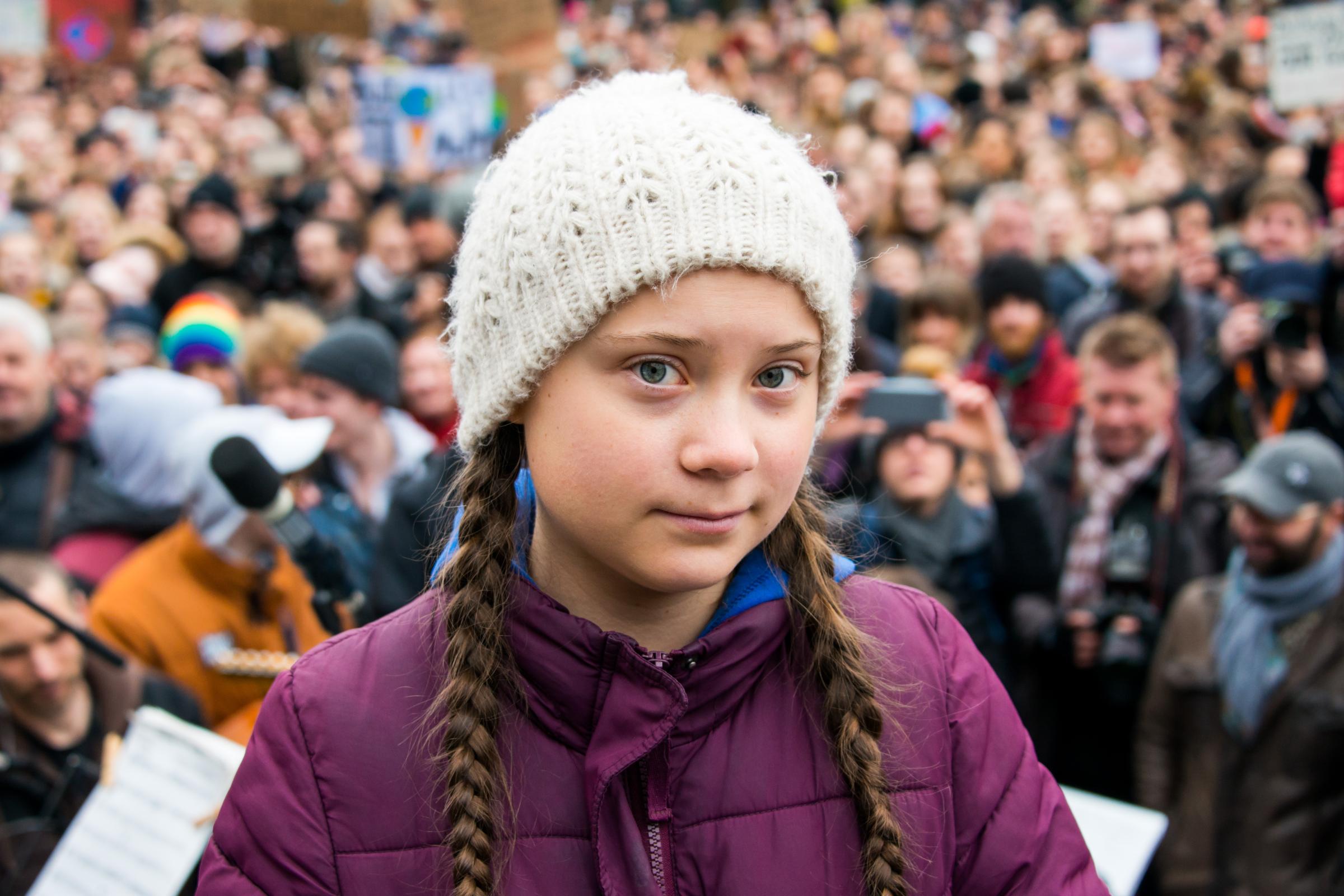Inside the U.K. houses of parliament, the grown-ups were at work. Outside, thousands of others — many of whom were not old enough to vote — were doing their best to make sure business was anything but usual. With their chants echoing down the streets, they were among an estimated 1.6 million students in over 120 countries who left school on March 15 in protest of adult inaction on climate change. “It shocks me how great a length we have to go to be heard,” said 16-year-old Miranda Ashby, who’d traveled more than two hours to London with roughly 50 of her classmates. “We are protesting now because if not now, when?”
The school climate strikes started with teen activist Greta Thunberg standing vigil outside Sweden’s parliament one Friday last August. “When I first started this strike, I didn’t really expect anything,” Thunberg told TIME on March 14, shortly after Norwegian lawmakers nominated her for the Nobel Peace Prize.
Thunberg’s idea has grown into a global movement; the March 15 action was its biggest yet. Extensive coverage of the strikes by media outlets and individuals on social media have helped elevate the cause in the minds of people across the world. Meanwhile, the lack of a centralized organizational hub makes it easy for teenagers to arrange actions in their own towns and cities; rallies took place in more than 2,200 towns and cities worldwide on March 15. “We’re tired of waiting for politicians to care,” says Nosrat Fareha, an organizer for the Sydney strikes, where 30,000 young people turned out — more than three times Fareha’s expected estimate.
In Uganda, where drought and desertification are already devastating, the walk-out took place despite officials blocking strikers from an intended rally location in Kampala. “I realized that my country has to change too,” 14-year-old organizer Leah Namugerwa says. And in the U.S., 17-year-old Feliquan Charlemagne, National Creative Director of the U.S. movement, believes the energy of March for Our Lives, the 2018 student-led initiative for gun control, must be harnessed for this cause too. Born in the Caribbean island of St Thomas, Charlemagne and his family have personally suffered the powerful effects of climate change, after Hurricane Irma devastated the island in September 2017. “This is not something we can play around with,” he says. “This is literally our future.”

It’s also their present. The warning of the landmark October 2018 report from the United Nations’ Intergovernmental Panel on Climate Change, that the planet was only 12 years away from catastrophe unless “far-reaching and unprecedented changes” are taken, weighs heavily on the minds of young organizers, who are quick to point out that they are the ones who have to live in that world. The deadline means there’s a lot of work to be done, and they don’t have time to wait to grow up first.
Their most pressing hope is for immediate policy measures to meet the terms of the Paris Agreement, limiting the global temperature increase to 1.5° celsius this century, as well as specific local action. In Australia, campaigners want to halt the proposed construction of a controversial coal mine. For activists across the U.S., preservation of public lands and political implementation of the Green New Deal are top priorities. And in the U.K., organizers want a fair portrayal of the climate crisis in school curricula and government information. And they’ve had some success already: youth organizers have met with members of the European Parliament and their strikes have been welcomed by leaders including Angela Merkel and U.N. Secretary General Antonio Guterres. “It really has changed the discourse,” says Sini Harkki, program manager at Greenpeace Nordic.
But at least for now, that’s all they can change; the youth that draws them to the cause is also an obstacle. Most of the movement’s participants are not just battling the obvious challenges of political inertia, powerful fossil fuel lobbies and disbelieving critics—they are also too young to play a bigger role in business or politics. And so they are determined to continue the Friday strikes. The U.K. Student Climate Network is demanding a meeting with political leaders, U.S. activists are planning a mass strike for May 3 and a pan-European organizer meeting is also in the pipeline. And Thunberg, no longer on her own, is committed to striking every Friday until Sweden reduces its carbon emissions in line with the Paris Agreement. “I know I have something to say,” Thunberg says, referring to her frank speeches in front of international leaders. “I have a message I want to get out and I want people to listen.” Students worldwide have heard her loud and clear. It’s up to the world’s politicians to act.
Correction, March 20:
The original version of this story misstated what a U.N. report found about the length of time Earth has before a climate change catastrophe. It was 12 years from 2018 (when the report was published), not 12 years from 2019.
More Must-Reads from TIME
- Caitlin Clark Is TIME's 2024 Athlete of the Year
- Where Trump 2.0 Will Differ From 1.0
- Is Intermittent Fasting Good or Bad for You?
- The 100 Must-Read Books of 2024
- Column: If Optimism Feels Ridiculous Now, Try Hope
- The Future of Climate Action Is Trade Policy
- FX’s Say Nothing Is the Must-Watch Political Thriller of 2024
- Merle Bombardieri Is Helping People Make the Baby Decision
Contact us at letters@time.com